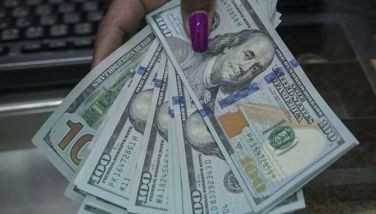A day at the Ayala Museum
CEBU, Philippines - I'd previously been to beaches and hotel oculars on familiarization tours sponsored mostly by airline companies. Usually, I would join these trips to comply with job assignments rather than being personally eager to go. The recent media jaunt with Cebu Pacific Air, via the maiden flight of their Airbus 330 from Cebu to Manila, was different. The itinerary included a tour to the Ayala Museum in Makati, which is something that I have quite an appetite for.
My passion for Philippine heritage and culture springs from a yearning to uphold our cultural identity. So going through three storeys of archaeological artifacts, embroideries, Southeast Asian ceramics, Surigao treasures, funerary masks and orifice covers, Philippine history in diorama experience, as well as art exhibits, really gave me the kicks.
The tour began at the galleries featuring "Gold of Ancestors," the pre-colonial treasures of the Philippines. There were more than a thousand gold objects, a celebration of the sophisticated cultures that existed in the pre-colonial Philippines in the 16th century. Adornments of elite individuals as well as those they don on icons of their deities included a spectacular array of golden sashes, necklaces, earrings and finger rings, bracelets and anklets, even chastity covers.
There was also the "Philippine Textiles Gallery," featuring two textile collections consisting of diverse pieces of Philippine dress. Traditional textile iconography, patterns and weaving techniques were featured in the exhibition of indigenous clothing from cultural communities in northern and southern Philippines. A collection on loan from the National Museum of Ethnology in Leiden, The Netherlands presented rare embroidered silk trousers and blouses made from pineapple fiber, silk and fine cotton, all from the 18th to 19th centuries. The fashion adapted from the Europeans was made to fit the tropical climate of the country and worn by the Filipino elite of the time.
A gallery called "A Millennium of Contact" showcased Chinese and Southeast Asian trade ceramics found in the Philippines from pre-colonial times. These hinted of how the country already had social and commercial ties with China and its neighbors way back. The display of over 500 ceramics provided a most comprehensive survey of the lively participation of the Philippines in Chinese and Southeast Asian trade that spanned a thousand years.
The Ceramics Study Center stood as a valuable resource for today's scholars of Philippine history, for both students and professional researchers. It displayed select trade wares from the Roberto T. Villanueva Foundation, supplemented by several books and publications on the art and history of ceramics from John D. Forbes.
The Zobel Multi-Purpose Hall, on the third floor, had sections that included "Pioneers of Philippine Art," "Images of Nation," "New Frontiers," and "Collector's Series" - covering the breadth of Philippine art from the 18th century to the contemporary.
"Pioneers of Philippine Art" chronicled 100 years of Philippine art from the late 19th century to the 20th century in the works of three artists - Juan Luna, Fernando Amorsolo, and Fernando Zobel - each artist a pioneer in his own way, in his own time.
"Images of Nation" showcased the works of the national artists for visual arts of the Philippines, while "New Frontiers" explored the work of groundbreaking contemporary artists. For its part, "The Collector's Series," displayed pieces from leading private art collections.
The "Philippine Diorama Experience," on the second floor, wowed me with its sixty handcrafted dioramas that formed the core of Ayala Museum's historical collections and chronicled the rich tapestry of Philippine history. The exhibition highlighted major events and themes from prehistoric times to the recognition of Philippine independence by the United States in 1946.
The "Philippine Diorama Experience" continued the whole historical stretch thereafter, in a multimedia presentation entitled "Towards a Working Democracy," enumerating momentous events from the grim postwar years all the way to the tumultuous 1950s, the riotous martial law years and then the first EDSA People Power Revolution in 1986. The day of our tour fell on a February 25, and I found it fitting to spend some more time in this particular gallery to commemorate, in a way, that significant moment in our history.
Another interesting spot at the museum was the "Maritime Vessels" gallery, which showcased miniatures of the different watercrafts that plied the Philippine seas and contributed to the development of Philippine maritime trade - from the balangays to the caravels, from Chinese junks to galleons.
Since 2013, a whole floor at the Ayala Museum - the sixth floor - has been designated home of the Filipinas Heritage Library. It is a highly organized repository of readily accessible Filipiniana materials and other references on Philippine arts, history and culture.
I couldn't help but admire the role of archaeology in reconstructing the past; for instance, how archeologists source out valuable information from funerary objects, information that would have otherwise been lost to the subsequent generations.
- Latest































